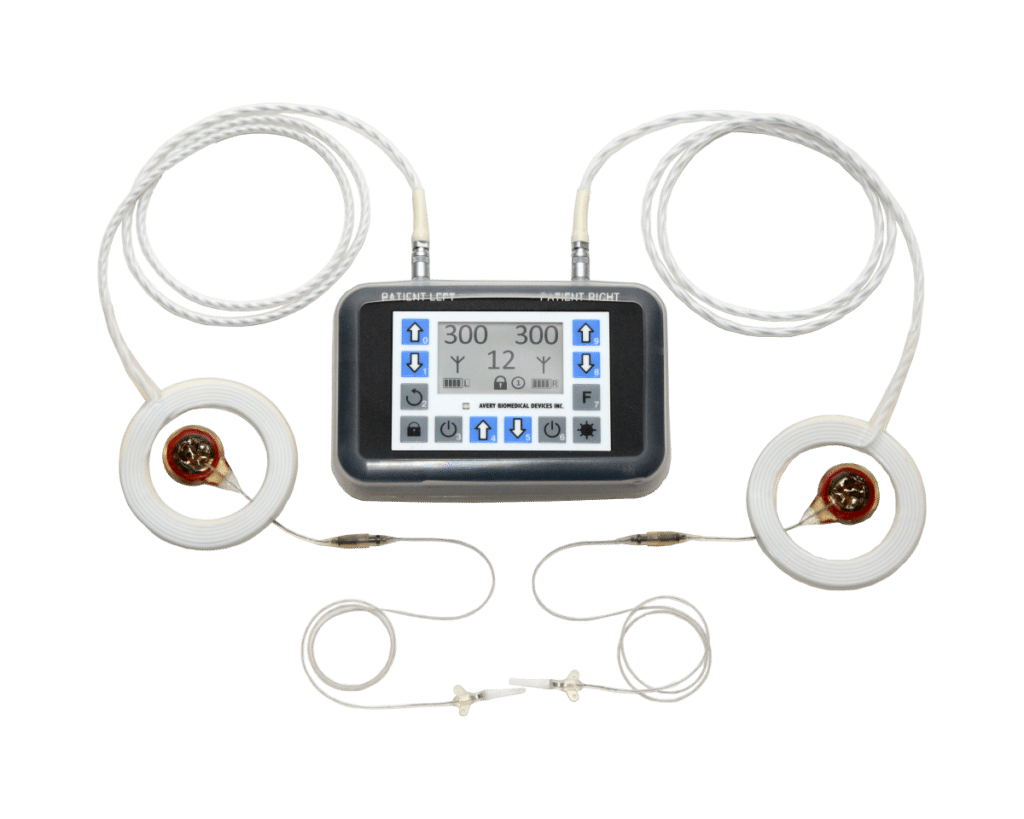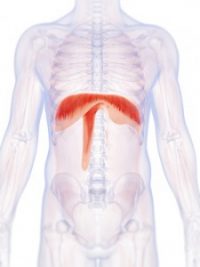
Commack, NY – Avery Biomedical Devices (Commack, NY), the global leader in high reliability diaphragm pacemakers, announced that its new diaphragm pacemaker transmitter, Spirit, has earned FDA approval and is now being offered to patients using its pacing system. This NextGen transmitter features a light-weight compact design with easy-to-use touch controls and offers precision-enhancing digital circuitry.
Avery Chief Executive Officer Linda Towler stated, “At Avery, our R&D activities have always been focused on improving the quality of life and safety of those patients using our diaphragm pacemakers. Our Spirit Diaphragm Pacing Transmitter offers an elevated level of user-friendly features that deliver our hallmark reliability and performance with added convenience.”
The Spirit Transmitter features a clear graphic display with touch controls that are not unlike those on a smart phone making it a familiar design and easy to use. Other valuable features include: backlighting for night viewing, audible and visual alarms, keypad locks and water resistant protection. To ensure its high reliability, the transmitter features bilateral redundancy.
Avery is the only diaphragm pacing system that has FDA PMA approval and CE marketing privileges for all ages. In addition, it is ISO 13485: 2016 compliant.
Avery’s leading-edge diaphragm pacemakers are recognized for their proven track record in high quality, high reliability and high patient safety performance. Avery diaphragm pacemakers have been safely implanted in over 2,000 patients in 40 countries. These adult and pediatric patients have chronic respiratory insufficiency due to conditions such as high spinal cord injuries (SCI), Congenital Hypoventilation Syndrome (CCHS), Central Sleep Apnea, Acute Flaccid Myelitis (AFM), various central neurological disorders, autoimmune diseases including Multiple Sclerosis and diseases caused by insect bites like Lyme Disease. For those patients who meet the criteria of having functional lungs and diaphragm muscle, as well as an intact phrenic nerve, they can be cleared for the device. It consists of surgically implanted electrodes and receivers with an external transmitter and antennas. The transmitter and antennas send radio frequency energy to the implanted receivers just under the skin. The receivers convert the radio waves into stimulating pulses which are sent through the electrodes to the phrenic nerves, causing the diaphragm to contract. This contraction causes inhalation of air, and when the pulses stop, the diaphragm relaxes, and exhalation of air occurs.
For patients who do meet the criteria, diaphragm pacemakers have been found to be a better alternative to mechanical ventilators. They offer greater mobility and independence; the ability to more easily perform daily activities like getting dressed, bathing and transferring from a wheelchair; lower risk of infections, pneumonia, collapsed lungs, airway injuries and diaphragm atrophy; reduced hospital admissions; improved breathing, speech, eating, drinking, hearing and sleeping; and the elimination of routine maintenance and disposable supplies needed with mechanical ventilators. A study published in the medical journal, Spinal Cord, also revealed a considerable savings. That study found that maintaining a patient with diaphragm pacing costs about 90% less than comparable costs for keeping someone on a mechanical ventilator, resulting in annual savings of up to $20,000. In the case of Avery pacers, because of their high reliability and cost effectiveness, there is a further benefit in that the costs for the device is reimbursed by Medicare and most private and government insurance providers around the world.
Avery’s diaphragm pacemaker has full PMA premarket approval from the U.S. Food and Drug Administration (FDA) and CE Marking privileges under the European Active Implantable Medical Device Directive for adult and pediatric cases.
To learn more about Avery’s new Spirit Diaphragm Pacing Transmitter and its diaphragm pacemakers, visit: www.averybiomedical.com

